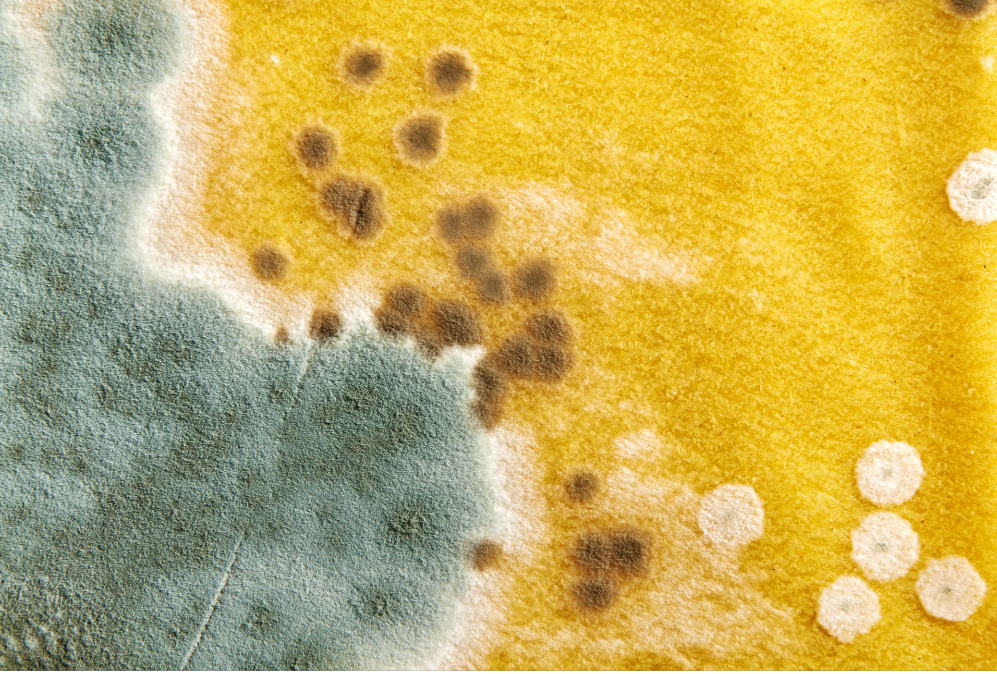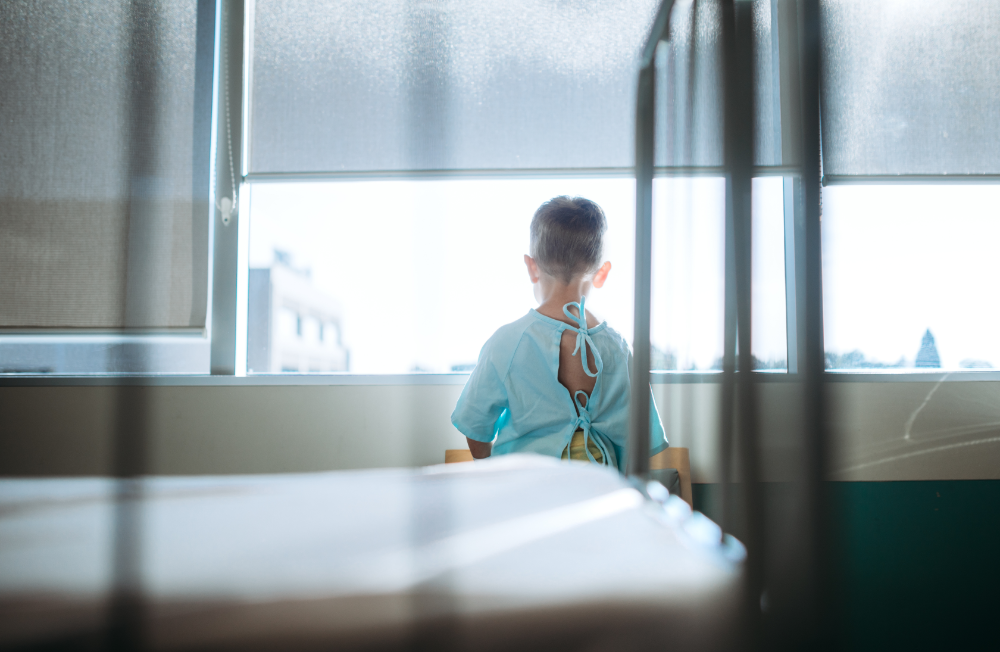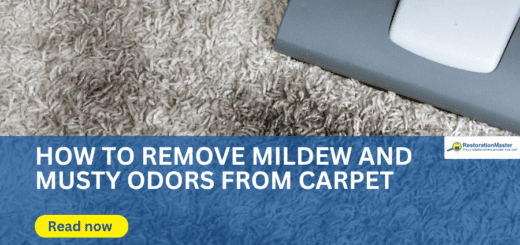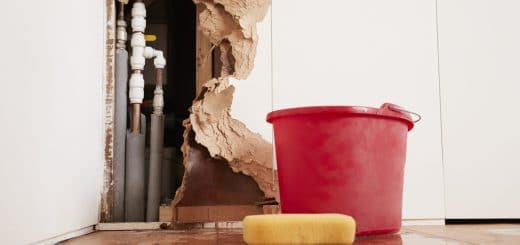How Dangerous is Mold Exposure to Babies?
MoldMold is a type of fungus that grows in damp or humid conditi... More is everywhere in the environment. But that does not mean the sporesSpores are microscopic reproductive units of fungi or mold t... More are safe for babies. The immune systems of infants are still, like babies, in their infancy—they’re in the developmental phase. It’s critical to remove household moldMold is a type of fungus that grows in damp or humid conditi... More as soon as colonies appear.
A type of fungus, moldMold is a type of fungus that grows in damp or humid conditi... More grows in the great outdoors as well as the cozy indoors. Outside, moldMold is a type of fungus that grows in damp or humid conditi... More is an essential component for the breakdown of organic materialsOrganic materials are derived from living organisms, such as... More, like dead leaves. Outdoor moldMold is a type of fungus that grows in damp or humid conditi... More is necessary, as it helps decompose decaying natural materials.
Airborne sporesSpores are microscopic reproductive units of fungi or mold t... More meander through the air and can enter the home through open windows and doors or through the HVAC system. MoldMold is a type of fungus that grows in damp or humid conditi... More can also be carried inside by pets and clothing. When the sporesSpores are microscopic reproductive units of fungi or mold t... More land in a hospitable place inside the home, they flourish rapidly.
Hospitable conditions require only three components: moisture, organic materialsOrganic materials are derived from living organisms, such as... More, and darkness. Moisture from a leaky roof feeds moldMold is a type of fungus that grows in damp or humid conditi... More sporesSpores are microscopic reproductive units of fungi or mold t... More and creates a major infestation. Potted plants that have excess water in their pots also attract hungry moldMold is a type of fungus that grows in damp or humid conditi... More sporesSpores are microscopic reproductive units of fungi or mold t... More. Likewise, leaky pipes support moldMold is a type of fungus that grows in damp or humid conditi... More.
It’s clear that moldMold is a type of fungus that grows in damp or humid conditi... More can begin to grow inside the home when conditions are ripe. When babies live inside a home where moldMold is a type of fungus that grows in damp or humid conditi... More grows, it presents a problem. Healthy adults who are exposed to small amounts of moldMold is a type of fungus that grows in damp or humid conditi... More do not suffer major health consequences. However, babies do.
The reason for the heightened danger from exposure to mold is simply that infants’ immune systems are still developing. Babies can experience allergic reactions, be prone to respiratory problems, start to have gastrointestinal problems or develop neurologic or neuropsychiatry disorders.
-
MoldMold is a type of fungus that grows in damp or humid conditi... More Allergies
Symptoms of moldMold is a type of fungus that grows in damp or humid conditi... More allergies in babies are similar to the common colds and include sneezing, runny nose, congestion, and cough. Infants might also experience additional symptoms from moldMold is a type of fungus that grows in damp or humid conditi... More exposure, such as an itchy throat, a rash, headaches, and chills.
Toddlers who are most at risk for developing moldMold is a type of fungus that grows in damp or humid conditi... More allergies are those who have a family history. Children who have a health condition that weakens their immune response are also highly likely to develop allergy symptoms upon exposure to moldMold is a type of fungus that grows in damp or humid conditi... More inside the home.
-
Respiratory Ailments
A moldy home is associated with a greater risk of respiratory distress in babies. In homes with high levels of moldMold is a type of fungus that grows in damp or humid conditi... More, 86 percent of infants have a higher chance of developing respiratory conditions than babies who are not exposed to moldMold is a type of fungus that grows in damp or humid conditi... More in the first 12 months of life.
Respiratory problems that can emerge include minor ones, like generalized coughing and sneezing, to significantly more serious ones, like bronchitis. MoldMold is a type of fungus that grows in damp or humid conditi... More exposure is also linked with chronic health problems later in life. Chronic respiratory issues, like asthma, are strongly linked with moldMold is a type of fungus that grows in damp or humid conditi... More exposure.
MoldMold is a type of fungus that grows in damp or humid conditi... More is not found to directly cause asthma, since genetics plays a major role. However, moldMold is a type of fungus that grows in damp or humid conditi... More does have a big impact on the development of the condition. Specifically, three types of molds are linked with the highest risk of developing asthma: Aspergillus ochraceus, Aspergillus unguis, and Penicillium.
-
Gastrointestinal Symptoms
Stomach issues are a less frequent symptom of household moldMold is a type of fungus that grows in damp or humid conditi... More exposure. Babies and toddlers might experience nausea, vomiting, diarrhea, and intestinal cramping. These gastrointestinal issues may occur alongside the more common symptoms of moldMold is a type of fungus that grows in damp or humid conditi... More exposure, such as sneezing and congestion.
-
Neurologic and Neuropsychiatry Disorders
Breathing in moldy air might be linked with neurological disorders—even though the jury is still out on this theory. Symptoms, like depression, brain fog, anxiety, and attention deficits are thought to occur when young children are exposed to mycotoxinsMycotoxins are toxic substances produced by certain types of... More, the hazardous chemicals in moldMold is a type of fungus that grows in damp or humid conditi... More.
A moldy home is dangerous to the health of infants. What is especially critical are the volume of moldMold is a type of fungus that grows in damp or humid conditi... More sporesSpores are microscopic reproductive units of fungi or mold t... More inside the home and the child’s length of exposure. These two factors are considered more impactful than the type of moldMold is a type of fungus that grows in damp or humid conditi... More suspected of growing inside the building.
When Should Parents Hire a Professional Mold Remediation Company?
While moldMold is a type of fungus that grows in damp or humid conditi... More is unhealthy for children to breathe in, the sporesSpores are microscopic reproductive units of fungi or mold t... More can never be fully eradicated from the environment. MoldMold is a type of fungus that grows in damp or humid conditi... More exposure, at some level, is unavoidable. However, parents are urged to clean up moldMold is a type of fungus that grows in damp or humid conditi... More when the area of contaminationContamination is the presence of harmful or unwanted substan... More is small or hire a professional if it is extensive.
Parents can start a DIY mold-cleanup job by wearing protective gear and ventilating the area. Diluted bleach or moldMold is a type of fungus that grows in damp or humid conditi... More removal products are efficient for cleaning up the moldMold is a type of fungus that grows in damp or humid conditi... More. Dry the area afterward. Most importantly, repairRepair is the act of fixing or restoring damaged property, m... More the moisture source so the moldMold is a type of fungus that grows in damp or humid conditi... More colonies do not return.
A severe moldMold is a type of fungus that grows in damp or humid conditi... More infestation that exceeds 10 square feet requires professional help. A qualified mold remediationMold remediation is the process of identifying, removing, an... Moreremediation companyA remediation company is a business specializing in cleaning... More will share a moldMold is a type of fungus that grows in damp or humid conditi... More cleanup plan with the homeowner, isolate the affected rooms and clean up the moldMold is a type of fungus that grows in damp or humid conditi... More. Upon dryingDrying is the process of removing moisture from materials, s... More the area, the crews repairRepair is the act of fixing or restoring damaged property, m... More the moisture source.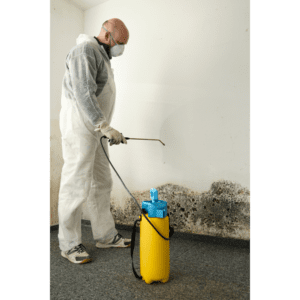
Protect the health of your children by calling in the moldMold is a type of fungus that grows in damp or humid conditi... More cleanup pros as soon as you see moldMold is a type of fungus that grows in damp or humid conditi... More on a large scale. These dedicated crews arrive promptly to assess the infestation and immediately develop a mold remediationMold remediation is the process of identifying, removing, an... More plan. IICRC-certified technicians isolate the moldMold is a type of fungus that grows in damp or humid conditi... More sporesSpores are microscopic reproductive units of fungi or mold t... More to prevent cross-contaminationCross-contamination occurs when harmful substances, such as ... More with other parts of the home. They utilize advanced cleaning products and proven techniques to eliminate all traces of moldMold is a type of fungus that grows in damp or humid conditi... More. Deodorization services are performed to remove the musty odors caused by moldMold is a type of fungus that grows in damp or humid conditi... More growth.
Professional mold remediation is recommended because homeowners who attempt to remove moldMold is a type of fungus that grows in damp or humid conditi... More on their own can inadvertently disperse the sporesSpores are microscopic reproductive units of fungi or mold t... More throughout the home and magnify the moldMold is a type of fungus that grows in damp or humid conditi... More issue.
If your home or business is infested with moldMold is a type of fungus that grows in damp or humid conditi... More colonies, mild remediation professionals will eliminate the moldMold is a type of fungus that grows in damp or humid conditi... More growth and return the building to safe and habitable conditions. Inhaling moldMold is a type of fungus that grows in damp or humid conditi... More can leadLead is a heavy metal that can be toxic to humans, especiall... More to adverse health consequences for both children and adults.










